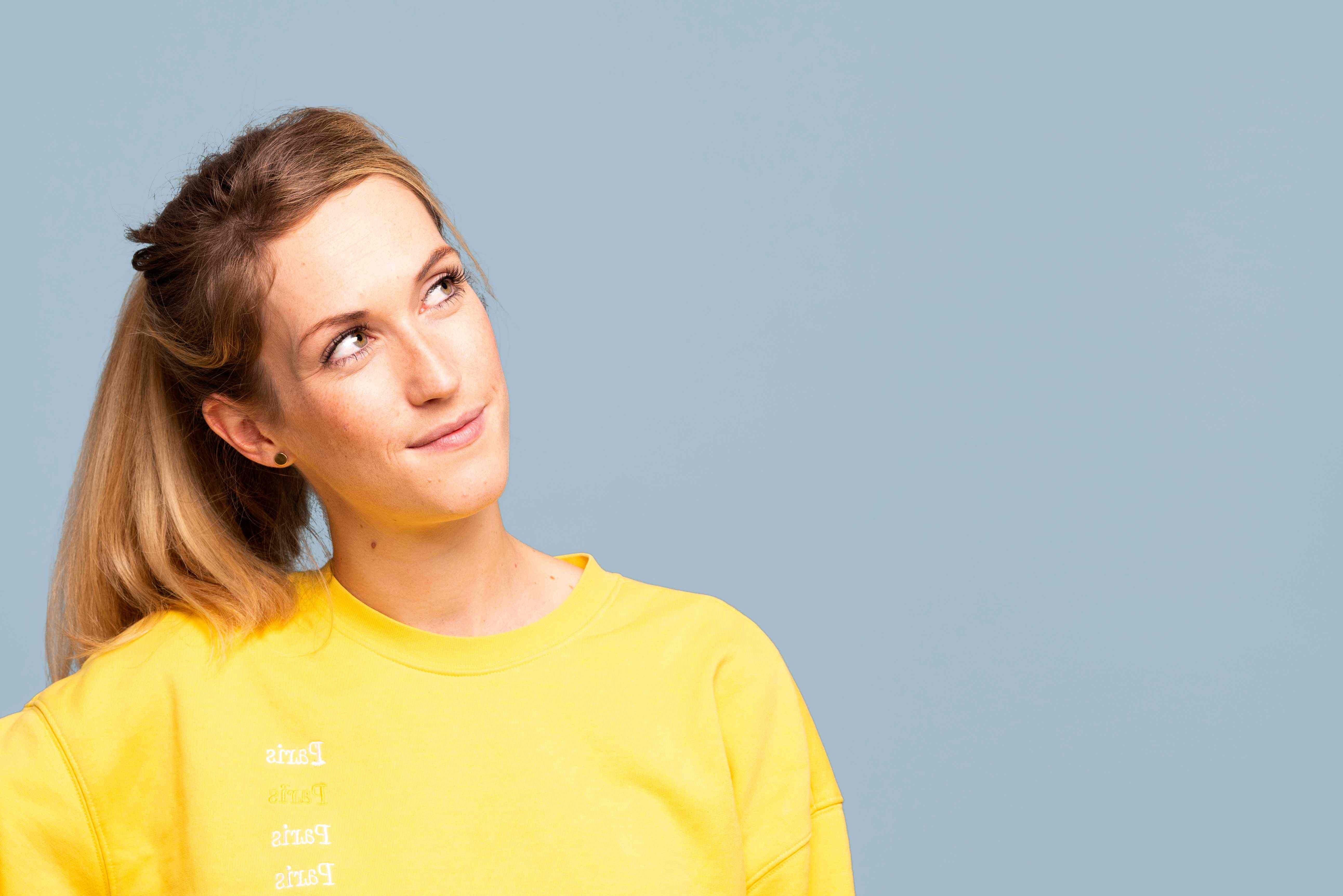Lena Overkamp: “Digital Design with a Positive Impact”

After six years in design, Lena Overkamp felt stuck in her job. She was working on the verge of art direction and interaction design but she knew there was to learn. A one-year master programme in Amsterdam helped her with the shift she needed in her career.
I’m a UX Designer at Hike One – a digital product design agency in Amsterdam. I started working here after I graduated from the Master Digital Design in 2021.
What I have noticed is that the professional opportunities here are way more specialized in UI/UX design than what I experienced it in Germany. For example, I haven't encountered that many German digital product design agencies, which really is a specialty. In Germany, it seems like many agencies cover a broader spectrum of services from advertising to digital design, giving designers lesser options to become experts.
From branding to digital
I started out at Lockstoff Design, a small German branding studio which has won many awards. There, I began teaching myself more UI/UX.
I became fascinated by how in digital design there is more of a structure and a logic to the design process based on research, collaboration with the client and good practices. It is rather a science than a form of art. In corporate design, I perceived the role of the designer as an authority who knows best based on their experience and assumption; while in digital design, you can test it and you can validate it.
So, I started to integrate the digital field into the agency and became the digital expert in the team. At the same time, I realized that I really liked UI/UX so, after three years, I left to i22 Digitalagentur. I was hired as an Art Director designing mostly campaign websites but in practice I was doing a mix of UI, UX, visual design, and art direction.
Learn, learn, learn
The need to constantly learn is very intrinsic to me. I am always wondering what’s next and what can I do to become better. Both for my work and my career. And so, while I was working in a more digital field, I felt I wasn’t learning enough.
That’s when I found the Master Digital Design in Amsterdam. All other programmes were quite theoretical but this one had a strong practical component that I liked.
A benefit to the programme was that I could explore different roles and different digital areas of design and thereby understand what I actually liked and be able to refine my profile.
I think the reflection we must write for assessments helped me a lot to think back again and again what I wanted to do in my career.
Back to school
The only thing I feared was that I would be the oldie in class. I had been working for six years by now. But, luckily, it was quite even. Some people were young and yet very experienced. So, age wasn't a problem. In fact, working with younger designers became an opportunity to explore how it is to be a team lead and to test that in a safe environment. That was a great experience as I see myself becoming a team lead in the future to help others become better designers.
Sprint to Dutch Design Jobs
I experienced Dutch design programmes to be more oriented to the way of working in the digital design industry compared to German design programmes. So, by studying here it was easier for me to start working in the Netherlands.
What I enjoy most about my current job is that I can really go into detail in UX design and I learn so much every day. At the master’s programme, we are given a toolbox of different skills and methods and this job allows me to keep building on those.
Just like in the studies I can now work closely with clients in workshops and design sprints, invite other designers to brainstorming sessions, and really think about the little details that the product needs.
Helping people through design
I'm motivated to solving people's problems. If the project is more of a business requirement to solve, then I'm not that enthousiastic. Through my work I can help make people’s lives a little bit better. Most times, throughout the process, you underestimate what your product does but when you see people interact with it and they are actually happy, then it's such a good feeling. Maybe one day I will be more of a social designer.
Digital Design with a positive impact
Everything in digital product design is prone to risk and affecting people and planet in a negative way.
Although it is difficult to change client wishes and business requirements, my goal is not to blindly design for the sole purpose of innovation and trends. Instead, I want to follow my own values and consider sustainable principles and social standards. It's really in the small decisions you take while designing that you can have a positive impact on your clients’ choices.
At the Master’s programme we always had to reflect and consider our choices as designers and question: was this the right decision; what did I do there; what could I have done differently?
Before, I mostly just followed what the brief said or the creative director wanted. I was good at understanding what the stakeholders wanted, but that was purely business requirements and there was no one speaking for the user and the final target group.
In a design ethics class, the lecturer encouraged us to create ethically justifiable designs as far as possible in our work. And if not at work, we should do so in side projects. But because I don't do side projects, I want to focus my efforts at work, so I must do my best in my job.